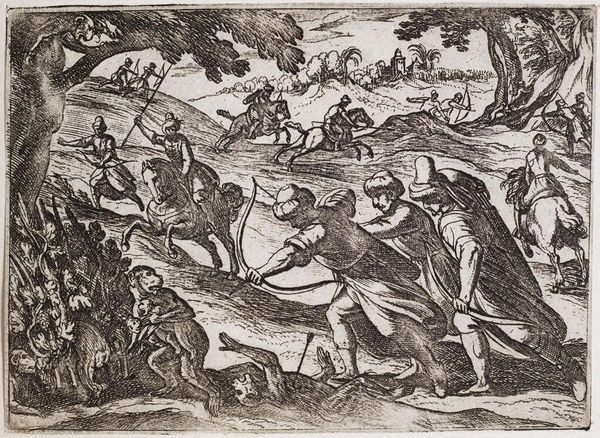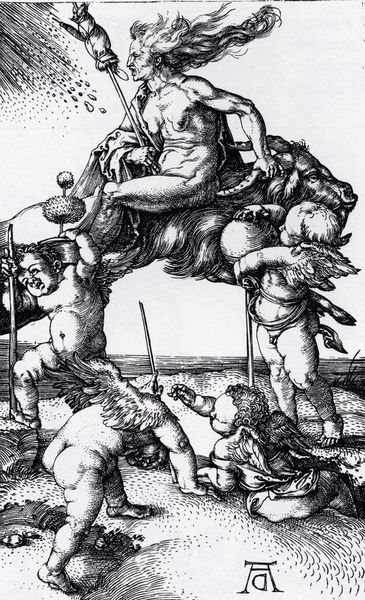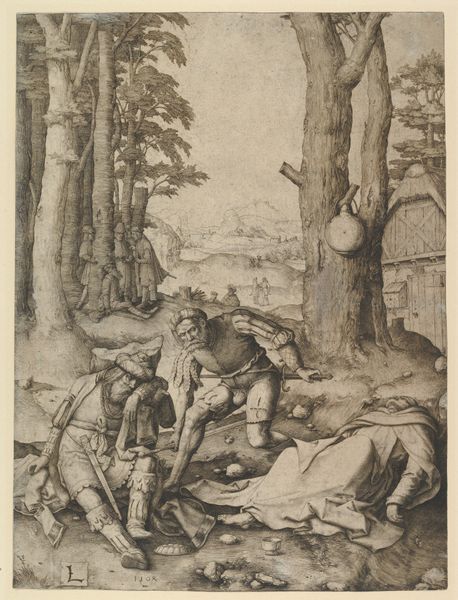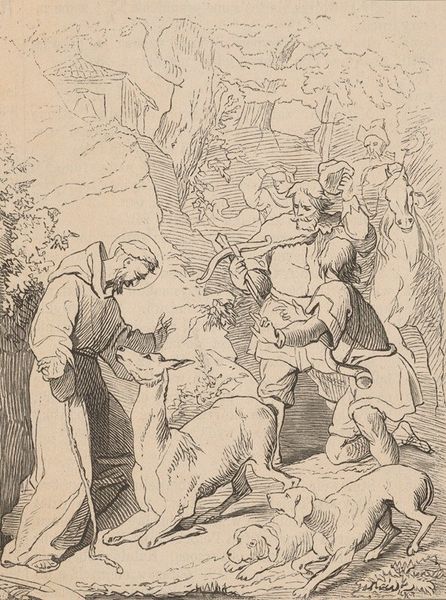
oil-paint
#
venetian-painting
#
narrative-art
#
oil-paint
#
landscape
#
figuration
#
oil painting
#
child
#
history-painting
#
italian-renaissance
Dimensions: 82 x 138 cm
Copyright: Public domain
Sandro Botticelli painted this panel of 'The Story of Nastagio' in the late 15th century, a period when Florence was flourishing under Medici patronage. Here, Botticelli visualizes a story from Boccaccio's 'Decameron', presenting a scene of brutal violence. We see a knight, Guido, eternally hunting down a woman, and the act of repeatedly killing her in a forest. This is their punishment: Guido, for committing suicide out of unrequited love, and the woman for not reciprocating his affection. Botticelli, rather than challenging these gendered power dynamics, visualizes the prevailing cultural narrative about the consequences of female denial. The painting transforms a personal drama into a public spectacle of violence, reinforcing patriarchal control. There is a voyeuristic aspect to the scene, where the male gaze is invited to witness the suffering of the female figure. While celebrated for its aesthetic qualities, it's important to reflect on how 'The Story of Nastagio' reflects the status of women in Renaissance society. The painting serves as a potent reminder of the narratives that have historically condoned the suppression and punishment of female desire.
Comments
No comments
Be the first to comment and join the conversation on the ultimate creative platform.














